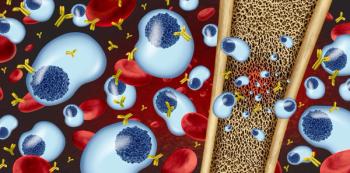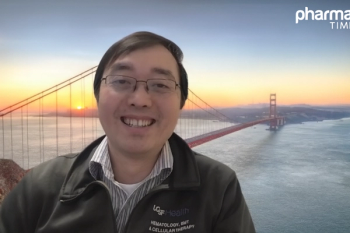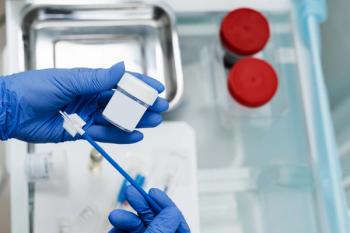
Novo Nordisk Drops Hims & Hers: Inside the Compounded GLP-1 Crisis
Key Takeaways
- The demand for GLP-1 receptor agonists has led to a controversial compounded market, raising regulatory and safety concerns.
- Novo Nordisk ended its collaboration with Hims & Hers Health due to illegal compounding practices and deceptive marketing.
GLP-1 medications like semaglutide face scrutiny over compounded versions, raising concerns about patient safety and counterfeit products in diabetes treatment.
The surging demand for glucagon-like peptide-1 (GLP-1) receptor agonists, essential for diabetes management and weight loss, has unintentionally contributed to a controversial compounded version market. This rapid expansion has ignited a complex crisis involving regulatory scrutiny and patient safety, pushing pharmacists to the forefront as vital patient advocates amid a landscape fraught with unapproved ingredients and counterfeit products.
Novo Nordisk Terminates Collaboration With Hims & Hers Health Inc
In a significant development in June 2025, Novo Nordisk, the manufacturer of semaglutide (Ozempic, Wegovy; Novo Nordisk), publicly announced the termination of its collaboration with Hims & Hers Health, Inc. This decision stemmed from Novo Nordisk's concerns regarding what it described as "illegal mass compounding and deceptive marketing" related to Hims & Hers' semaglutide offerings. This move by a major pharmaceutical company underscores the escalating tensions within the GLP-1 market and manufacturers' resolve to protect their intellectual property while ensuring patients receive regulated, high-quality medications.1
Regulatory Warnings: Unapproved Ingredients and Counterfeit Products
The FDA has issued stern warnings about the proliferation of compounded GLP-1s.1 A primary concern is that many compounded preparations contain unapproved ingredients, such as semaglutide sodium or semaglutide acetate.1 These are chemically distinct from the active ingredient found in FDA-approved Ozempic and Wegovy.1 The FDA has explicitly cautioned consumers about the presence of counterfeit Ozempic within the US drug supply chain, urging patients to meticulously inspect their products for legitimacy. The agency stresses that compounded drugs bypass the rigorous FDA approval processes for safety, efficacy, and manufacturing quality, leaving patients vulnerable.2
The regulatory framework allows compounding pharmacies to create copies of drugs during official shortages of their FDA-approved counterparts.1 Despite the FDA's assertions that the shortage for specific GLP-1 medications no longer applies, numerous compounding pharmacies have continued their production. This sustained compounding activity, often in defiance of FDA warnings, signals a clear regulatory challenge.3
Patients are the primary casualties in this unregulated environment. Reports of adverse events linked to compounded GLP-1s are increasing, ranging from unexpected adverse effects to a complete lack of therapeutic effect due to inconsistent dosages or impurities.1,3 Without the stringent oversight of the FDA, patients are deprived of the assurance of quality and safety that is inherent in approved medications.2 The pervasive risk of receiving a counterfeit product—which might contain no active ingredient at all or, worse, harmful contaminants—further complicates and endangers the patient's treatment journey.2,3
Despite regulatory warnings, advocates for compounding argue that these pharmacies play a critical role in patient access—especially during drug shortages or when commercial products are cost-prohibitive. Many patients have turned to compounded semaglutide due to the ongoing demand and limited availability of FDA-approved formulations like Ozempic. Proponents contend that when properly prepared by licensed 503A compounding pharmacies or 503B outsourcing facilities, compounded GLP-1 medications can offer patients timely, affordable alternatives.3
Guiding Patients
Pharmacists must emphasize to patients the critical importance of obtaining GLP-1 medications exclusively from verified and reputable sources. This includes discussing the dangers of purchasing medications from sketchy websites, unverified online pharmacies, or nonlicensed distributors. Pharmacists should explain that such sources often operate outside regulatory oversight, increasing the risk of receiving unapproved, substandard, or counterfeit products. They should clearly differentiate between legitimate 503A compounding pharmacies, which prepare patient-specific prescriptions, and 530B outsourcing facilities, which produce for office use, and explain that products from unauthorized mass compounders or online vendors carry significant risks.1,2
Pharmacists are uniquely positioned to educate patients about the specific risks associated with unapproved ingredients, such as semaglutide sodium or semaglutide acetate, which are not found in FDA-approved GLP-1 products.1 They should also inform patients about how to identify potential signs of counterfeit medication, such as unusual packaging, incorrect dosage information, or a lack of expected therapeutic effect. Patients should be advised to inspect their medication carefully and report any suspicious findings immediately to their prescribing physician or pharmacist.2
Crucially, pharmacists must empower patients to report any unexpected or severe adverse effects, or a lack of efficacy, directly to their health care provider. Pharmacists should also explain the process of reporting adverse events or suspected counterfeit products to the FDA's MedWatch program, thereby contributing to broader public health surveillance and safety efforts.2 By providing this guidance, pharmacists help ensure patient safety and contribute to better regulatory intelligence.
Conclusion: Navigating the Complex Landscape
As of 2025, the compounding of GLP-1s remains a highly contentious issue. The immense patient demand, coupled with the legal intricacies surrounding drug shortages, guarantees that this market segment will continue to face intense scrutiny. Regulators, manufacturers, and health care providers—particularly pharmacists—must collaborate closely to navigate this complex terrain, always prioritizing patient safety above all else. The ongoing conflict between innovation, access, and regulation continues to shape the future of these highly sought-after medications, underscoring the enduring need for vigilance and informed patient care.
References
Novo Nordisk terminates collaboration with Hims & Hers Health, Inc. due to concerns about their illegal mass compounding and deceptive marketing. PR Newswire. Published May 23, 2024. Accessed June 26, 2025.
https://www.prnewswire.com/news-releases/novo-nordisk-terminates-collaboration-with-hims--hers-health-inc-due-to-concerns-about-their-illegal-mass-compounding-and-deceptive-marketing-302488189.html FDA warns consumers not to use counterfeit Ozempic (semaglutide) found in US drug supply chain. U.S. Food and Drug Administration website. Published December 21, 2023. Accessed June 26, 2025.
https://www.fda.gov/drugs/drug-safety-and-availability/fda-warns-consumers-not-use-counterfeit-ozempic-semaglutide-found-us-drug-supply-chain Compounders defy FDA on GLP-1s. Axios. Published May 21, 2024. Accessed June 26, 2025.
https://www.axios.com/2025/05/21/compounders-defy-fda-glp1 Tell the good from the bad on compounded GLP-1 drugs. American Enterprise Institute website. Published May 23, 2024. Accessed June 26, 2025.
https://www.aei.org/health-care/telling-the-good-from-the-bad-compounded-glp-1-drugs/
Newsletter
Stay informed on drug updates, treatment guidelines, and pharmacy practice trends—subscribe to Pharmacy Times for weekly clinical insights.




















































































































































































































